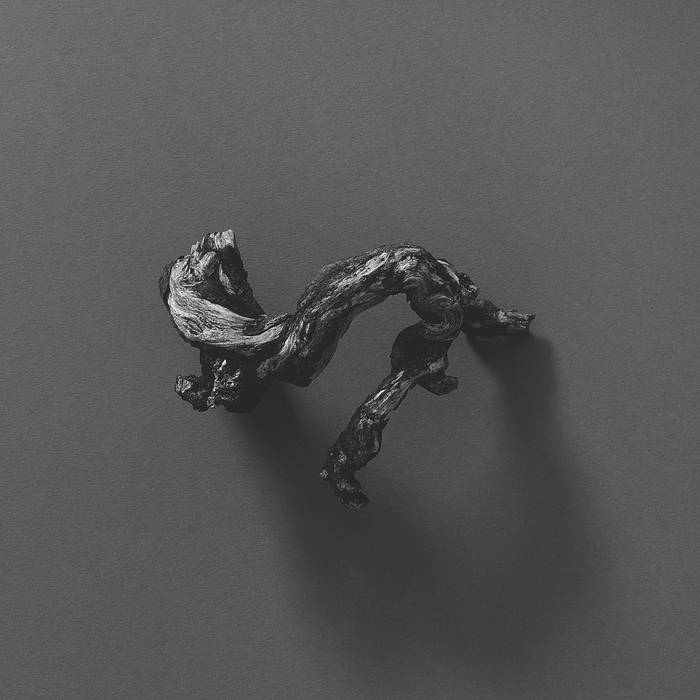According to Roland Barthes, the event of grief gives way to an absence that paradoxically fills us. “We don’t forget, but something vacant settles in us.” The oxymoron of becoming full with emptiness. The hollows fill with more empty space. When Richard Skelton lost his wife in 2004, he began to process the tragedy by composing music. He filled the empty spaces with sound. At that time he also returned to his parents’ home in Wigan, where, in his own words, he was “reconnecting with a sense of that childhood wonder, completely refracted through the prism of grief”.
Born in the UK and most recently based in Ireland, Skelton is a multidisciplinary artist: a musician, poet, filmmaker, and writer. He resolves to bury his ghosts and then exhume them, like bog bodies, drawing music from instruments that have paid their dues beneath the earth. For his 2014 album Nimrod Is Lost in Orion and Osyris in the Doggestarre, Skelton quite literally buried a violin, and later unearthed it, connected it to a microphone, and experimented with its altered voice. As if the ritual of returning something to the earth and drawing it back out again could collect and bestow secrets from the soil. It sounds almost like an Orphean rite, to lose something in the depths and then retrieve it and make it sing. “I wanted the land to impart itself viscerally on the music I was to create,” Skelton explained.
The result of his projects is often the illusion of a vast and spacious landscape. Nothing barren or empty, but something verdant and heavy. Something lush and overcome with a quiet, wet grief.
The notes in his latest release, The Second Chamber, are prolonged, bleeding, and weighted. Nothing drifts without intention. Each note extends with purpose and precision. Skelton uses silence and emptiness as a painter uses negative space, treating it like a material instead of an absence. The lack of something is also an integral presence to the composition’s architecture. As each note subsides, the silence consumes it. When the next note emerges, it displaces the silence only to be reabsorbed. A constant dialogue of delicate tension between absence and presence, circulating and chasing, simultaneously interrupting and defining one another.
The Second Chamber marks twenty years since Skelton first began releasing music through his own label, Sustain-Release. Rather than compiling a ‘best-of’ in retrospect, he chose to release a series of new creations that held true to the spirit of the original project. Across Skelton’s expansive discography, he has explored a panoply of sounds and terrains – some rooted deep in the Earth, and others dissolving into the cosmos. While certain projects leak with melancholy, others have been more urgent and unsettling in their expression. Some come up emptier, but never lacking; while others are busier and more layered.
The landscape of this latest release reveals a shift in density. Perhaps it’s the heaviness of the cello that conjures looming mountains rising above and around you, especially present in ‘Archaism’. In ‘Cascade’, a darkness settles like a fog, thick and enveloping. Everything is dripping in emotion. The music offers the consistent engaging complexity and sustained tension of a film score.
The Second Chamber unfolds like a cyanotype, an art form shaped by long exposures and gradual transformation. Its sonic rinses and slow tonal bleeds evoke a striking hue tempered by telluric shadows. Its final form is a shade of blue long associated with melancholy and rare natural beauty.
Skelton’s music has always maintained a deep-rooted connection to nature. In the past, he’s even embedded physical artefacts such as twigs and soil from meaningful landscapes into the packages of his release, associating his music with something grounding, elemental, and terrestrial.
The track titles on this album also often evoke potent natural imagery, often mirroring emotions and states of being, such as ‘Confluence’ and ‘Unmoored’. The whole album feels like the delicate unspooling of a ball of thread, followed by the quiet tracing of its path with gentle fingers. If grief is an absence, then art becomes the act of filling that temporal space with our own outpourings. In the case of The Second Chamber, the result is something organic and quietly pastoral, conjuring mirages of landscapes both natural and surreal.


